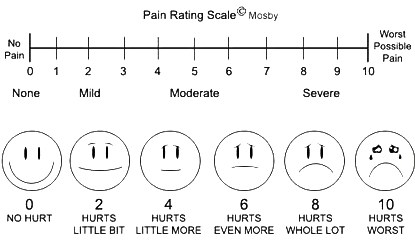
Yim KH, Nahm FS, Han KA, Park SY (2010) Analysis of statistical methods and errors in the articles published in the Korean Journal of Pain. Swift A (2015) The importance of assessing pain in adults. Srouji R, Ratnapalan S, Schneeweiss S (2010) Pain in children: assessment and nonpharmacological management. Manikandan S (2011) Measures of central tendency: median and mode. Lee Y (2015) What repeated measures analysis of variances really tells us. Kim TK (2017) Practical statistics in pain research. Ghasemi A, Zahediasl S (2012) Normality tests for statistical analysis: a guide for non-statisticians. In such situations, statistical tests should be used based on the distribution of data. scores are reduced with an analgesic, this would make the data linear in nature. Another school of thought mentions that pain scores should be considered as a ratio (Ghasemi and Zahediasl 2012). For skewed distribution tests like Kruskal-Wallis, Wilcoxon rank sum test or Mann-Whitney could be used. If pain scores are parametric in distribution, the t test or analysis of variation (ANOVA) can be used.

Based on this, the statistical tests should be employed and should be specifically mentioned what test was used for a particular type of data. The distribution of data (normal or skewed) should be mentioned along with the name of the test that was used to determine the distribution of data. Authors should mention in the methods section what kind of data they have gathered (nominal, ordinal, interval, ratio, discrete, continuous). This important piece of information is missing in many papers which is very important. Based on the type of distribution, researchers can apply indicated tests for the analysis of pain scores. Numeric pain rating scale was used to assess the intensity of pain on a scale of 0 to 10, where 0 is considered as no pain while 10 means worst pain ever felt. Therefore, it is important to analyse data using tests like the Kolmogorov-Smirnov test or Shapiro-Wilk test to determine the distribution of data (Kim 2017). between 2 and 4 for the entire duration of analysis as per methodology. This can be explained if pain scores are scattered in a narrow range, i.e. However, researchers are of the opinion that if pain scores are distributed normally, it can be analysed using parametric tests. data which is not distributed normally (Yim et al. On many occasions, researchers use parametric statistics to analyse and compare non-parametric data, i.e. skewed, non-parametric statistical tests are used for statistical analysis. Thus, for data which is not normally distributed, i.e. For a non-parametric data, median with interquartile range is the preferred central tendency used. data with skewed distribution (Manikandan 2011). In statistics, ordinal data is considered non-parametric, i.e.

Conventionally, pain scores are considered ordinal data, i.e.

Cut to size and laminate for increased durability.ġ Self-report of pain is defined as the ability to indicate presence and/or severity of pain verbally, in writing, or by other means such as finger span, pointing, head movement, or blinking eyes to answer yes or no questions.There is skepticism regarding the correct statistical used in the analysis of pain scores. Note: To use as a pocket guide, print the NRS and directions document front to back on card stock paper to create two tools.
#NUMERIC PAIN SCALE HOW TO#
How to use: Ask individual to point to the number on the Numeric Rating Scale that best represents the intensity of their pain NOW.ĭocumentation: Document/record all scores in a location that is readily accessible by others on the health care team.



 0 kommentar(er)
0 kommentar(er)
